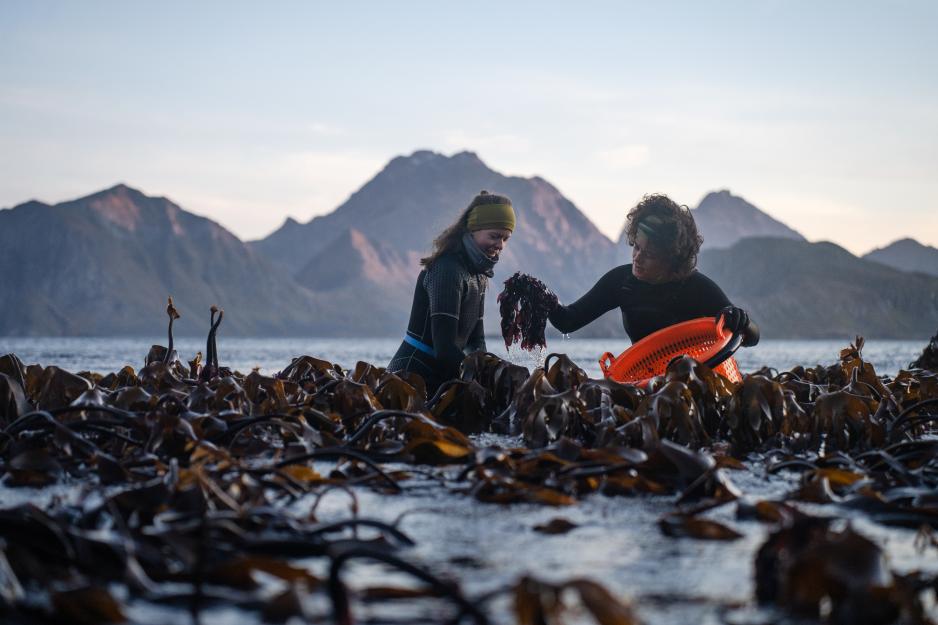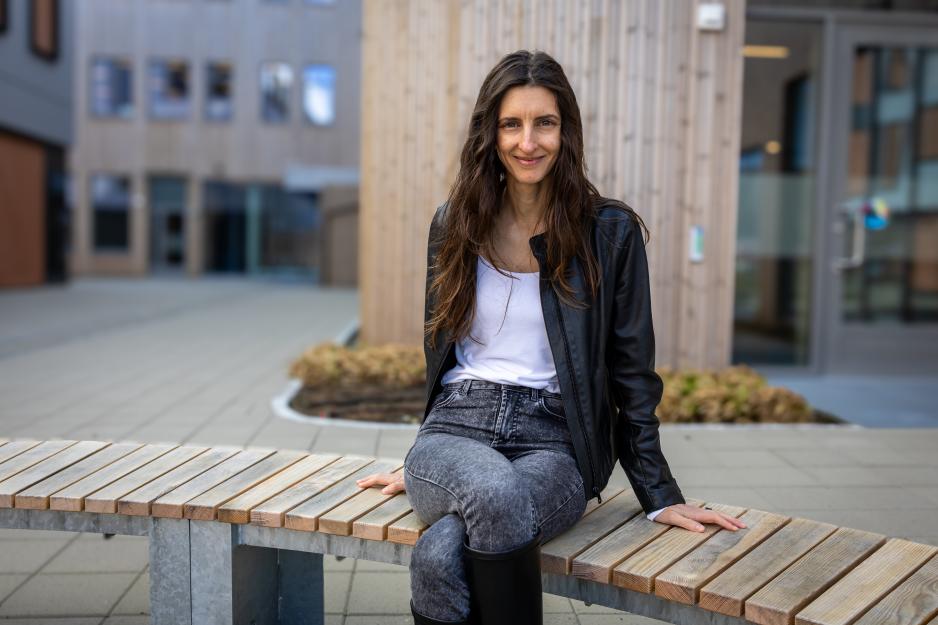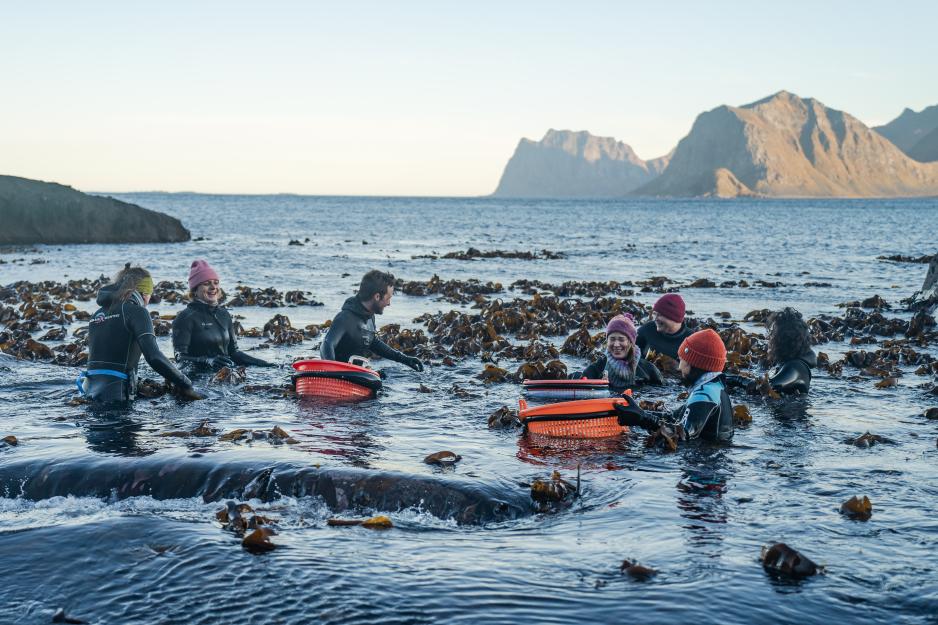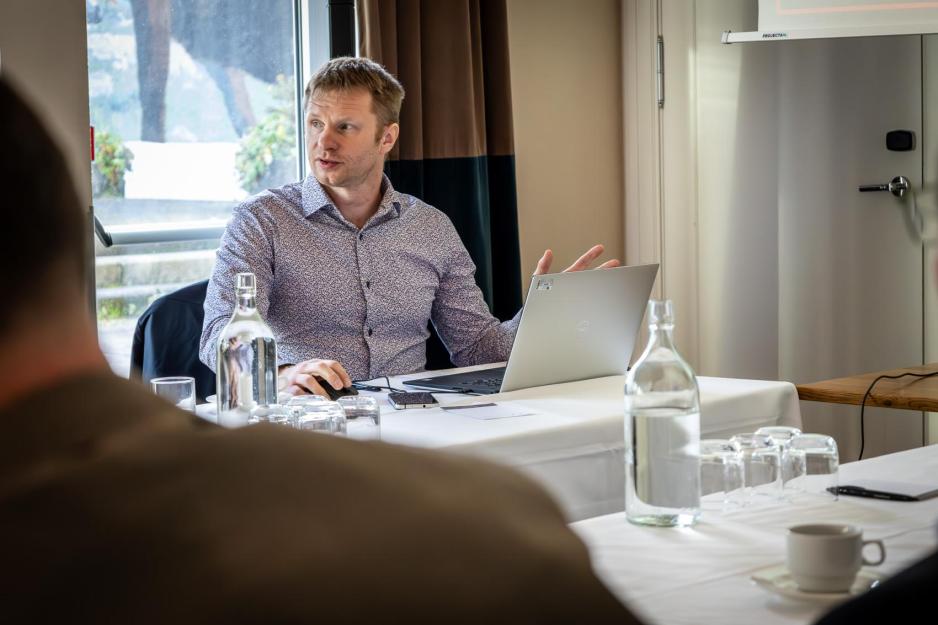New Study Aims to Put Arctic Food on the Global Menu

Example of Arctic food innovation: Lofoten Seaweed hand-harvesting dulse in the fast currents of Nappstraumen. A new study explores sustainable food production and opportunities in the Arctic. Photo: Caitlin Long.
A new Canada–Norway study aims to highlight Arctic food innovation — with potential to improve food security and create jobs in northern communities.
What does food innovation mean in the Arctic?

Maria Kourkouli is coordinating the project’s research from Bodø. Photo: Markus J. Thonhaugen / High North Center.
That question is at the center of a new study led by Nord University's High North Center, in partnership with the University of Saskatchewan.
The initiative brings together experts and stakeholders from Norway and Canada to explore new ways of producing, branding and distributing food in Arctic regions.
– We want to map out what’s already happening and what’s possible in the future, says Maria Kourkouli, who leads the new feasibility study.
From Concept to Collaboration
The project builds on the Canadian-led Arctic Food Innovation Cluster (AFIC), which aimed to connect players in the Arctic food sector.
Its first phase ran from 2020 to 2025 under the Arctic Council. The current project is a feasibility study exploring how the AFIC concept could be put into practice.
Professor David Natcher at the University of Saskatchewan is representing the Canadian side. He says the work is important.

David Natcher is the Canadian lead on the project, based at the University of Saskatchewan. Photo: University of Saskatchewan.
Even though North Canada exports food to more than 130 countries, many local communities still face food insecurity, Natcher tells.
– A lot of food is produced in the North, but it rarely ends up on local tables. We want to change that by finding ways to keep more of it in the region.
– This project could help both Canada and Norway create new jobs, support innovation, and strengthen food security for people across the Arctic, says Natcher.
A Shared Label for Northern Food?
The project also looks at whether Arctic food could benefit from a clearer identity.
One idea is to create a shared label — like Made in Arctic — that links producers across borders. Not just for marketing, but to boost visibility and cooperation.
Similar efforts already exist, like Sámi Made in Norway and Indigenous-led food brands in the U.S. Whether something like this could work across the Arctic is one of the questions the study hopes to address.
– Branding is interesting, but we’re also looking at sustainability, entrepreneurship, and community impact, Kourkouli adds.
– It’s not about producing as much food as possible. It’s about doing it in smarter ways that help communities thrive and attract young talent.
Seaweed Harvesting in Arctic Waters
One example of Arctic food innovation can be found in Napp in Lofoten. Here we find the company Lofoten Seaweed. The company creates seaweed products for everyone — from home cooks to pro chefs.
Co-founder Tamara Singer shares the following photo, which shows how they hand-harvest dulse from Nappstraumen.
– The world’s fourth-fastest tidal current. We can only harvest dulse during the lowest tides and under the right light and weather. It’s one of the most challenging seaweed species to harvest.

For Singer and her team, the Arctic is a region of potential. (Photo: Caitlin Long)

Co-founder Tamara Singer of Lofoten Seaweed. Photo: Morten Munthe.
For Singer and her team, the Arctic is a region of potential.
– We have some of the world’s cleanest, most nutrient-rich waters. The unique light conditions here are great for growing seaweed. And the decline of the fishing industry has freed up waterfront facilities that we now use for processing.
– We hope that we are one of many producers contributing to greater recognition of the unique and sustainable foods from this incredible ecosystem.
What is Arctic food innovation?
So what exactly is Arctic food innovation?
Kourkouli explains:
– It can mean growing vegetables in greenhouses in remote places.
– But also how food is used in a wider sense. For example, using waste products to make fish feed, or creating new kinds of businesses that involve local communities.
The team is especially interested in solutions that support sustainability, zero waste, and regional resilience.
The road ahead
Andrey Mineev leads the Business Index North (BIN) at the High North Center; a project focusing on sustainable economic development in the Arctic.
He explains that the feasibility study will result in a new BIN report titled Arctic Food Innovation. This is set to be published in autumn 2025.
– Too often, the Arctic is seen as a place where raw materials are extracted and sent elsewhere, says Mineev.
– But we believe food innovation can help build a smarter, more resilient economy — with strong local roots and global relevance.
Once the report is published, the aim is to bring stakeholders together – from policymakers and researchers to companies and clusters, to explore next steps.
The team sees this as a pilot ‘for something bigger’.
– The Arctic can be a learning example for other parts of the world. But first, we need to make the potential more visible.

The feasibility study is about mapping possibilities and highlighting good examples, explains Andrey Mineev with the Business Index North-project, here photographed at a BIN meeting in Reykjavik. Photo: Markus J. Thonhaugen / High North Center.

